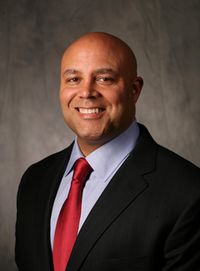NCTA's Powell: Biggest Subscription Video Provider is Netflix, Not Cable

In Michael Powell's view, a streaming service, not a traditional MVPD, is the top video provider in the U.S.
"The largest subscription video provider in the country today is Netflix — not Comcast, Time Warner Cable, DirecTV or any other MVPD," the National Cable & Telecommunications Association president will tell the Senate Communications Subcommittee in testimony prepared for a May 14 state of video hearing. And 65% of that Netflix viewing is on a TV set, not a computer, he adds, citing Nielsen figures.
But wait, there's many more. He cites a laundry list of over-the-top companies that have emerged as competitors in the space, including Hulu, Amazon, iTunes, CinemaNow, network websites, HBOGo, Apple TV, user-generated and special-interest sites like YouTube, Vimeo, and TED.com, as well as YouTube's just announced subscription video service: "If market failure is characterized by a lack of new entry, there is clearly no failure in the video marketplace."
That doesn't mean traditional MVPDS, though, are conceding the space. "Among other reasons, the private platforms are more highly optimized for quality and reliability and deliver video content more efficiently than the public Internet," according to his prepared testimony. "Additionally, the continuous challenges of piracy, malware and cyberthreats on the public web will keep the value of private platforms high. Most importantly, the cable model is critically important for monetizing and delivering the highest premium content to consumers – including sports, live news, and premium series."
The Republican staff memo on the hearing addresses the growing ability of smaller players to deliver high-quality content once the province of big media. "The globally-connected Internet, the wide availability of broadband services, and the advent of digital technology has dramatically lowered the cost of creating video content, allowing individuals and small businesses to create and distribute quality video programming to mass audiences, which previously was only possible for large media companies," according to the subcommittee's staff
memo.
But Powell suggests that high-quality content still requires the kind of investment those established companies are willing to make and are able to make via their distribution model: "[W]ithout cable subscribers paying to watch shows like Mad Men, those shows would never even be available to run later through online services."
Powell's message: The MVPD businesses is competitive, innovative and thriving and that cable operators are not looking for government to become a bigger player in the space.
"Cable, satellite, phone, and online video providers are competing in the arena that benefits consumers –the marketplace – and not before this committee or the FCC. The cable industry is prepared to meet the future in that arena," according to his testimony.
The smarter way to stay on top of the multichannel video marketplace. Sign up below.
Contributing editor John Eggerton has been an editor and/or writer on media regulation, legislation and policy for over four decades, including covering the FCC, FTC, Congress, the major media trade associations, and the federal courts. In addition to Multichannel News and Broadcasting + Cable, his work has appeared in Radio World, TV Technology, TV Fax, This Week in Consumer Electronics, Variety and the Encyclopedia Britannica.

